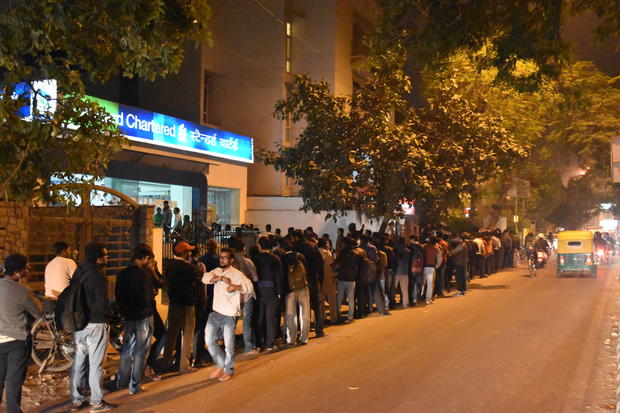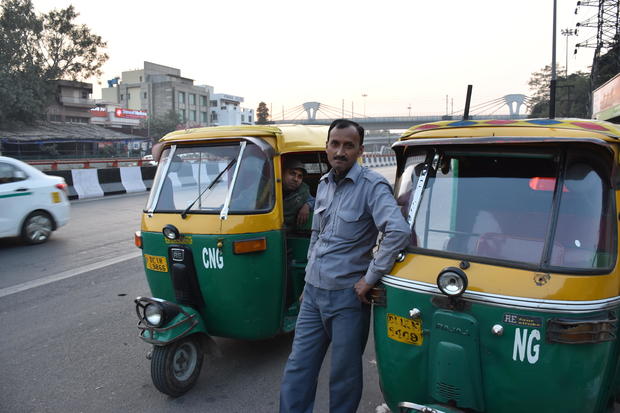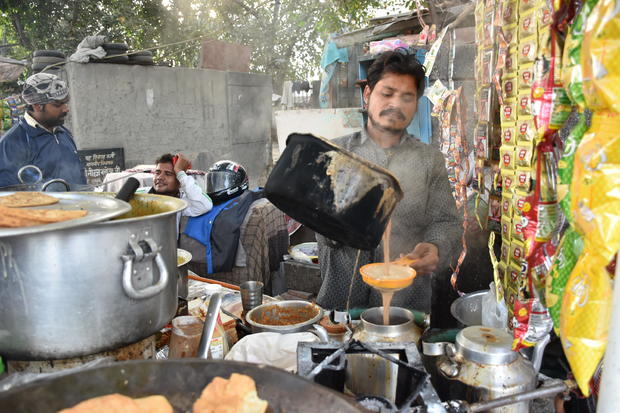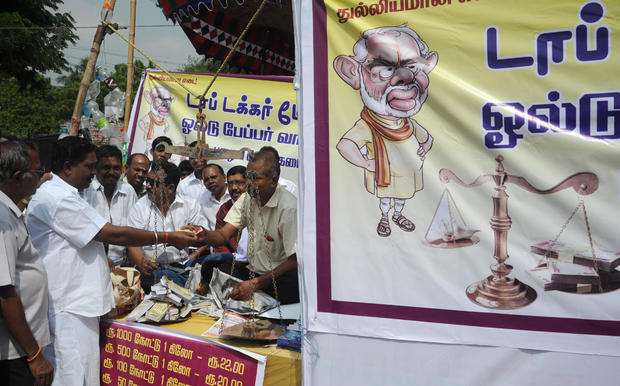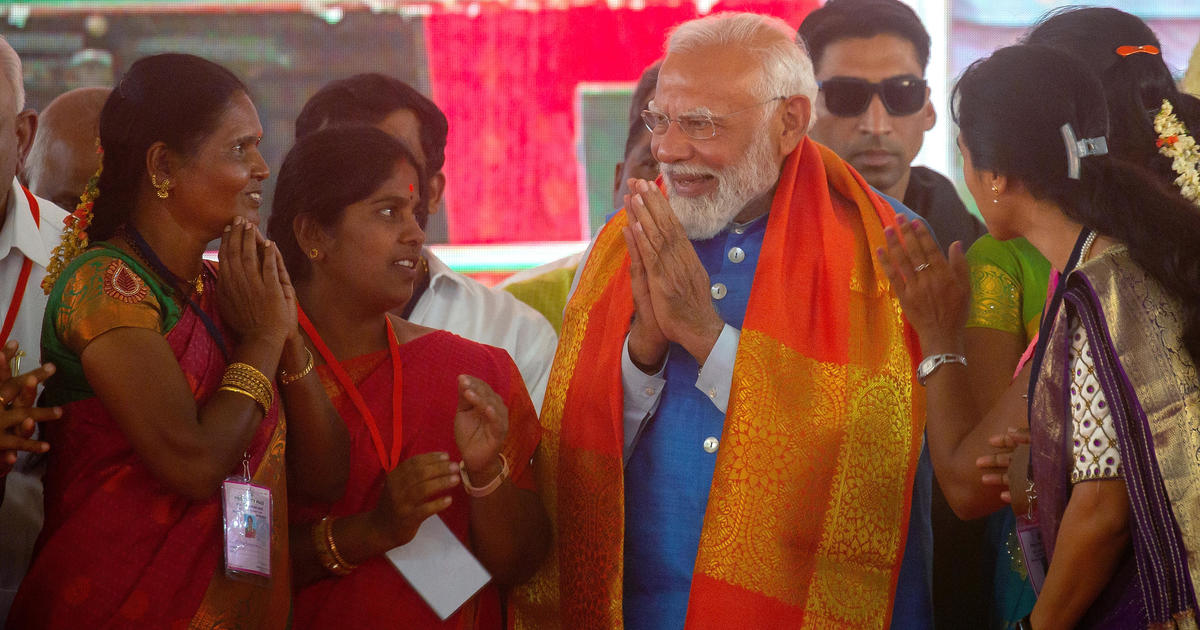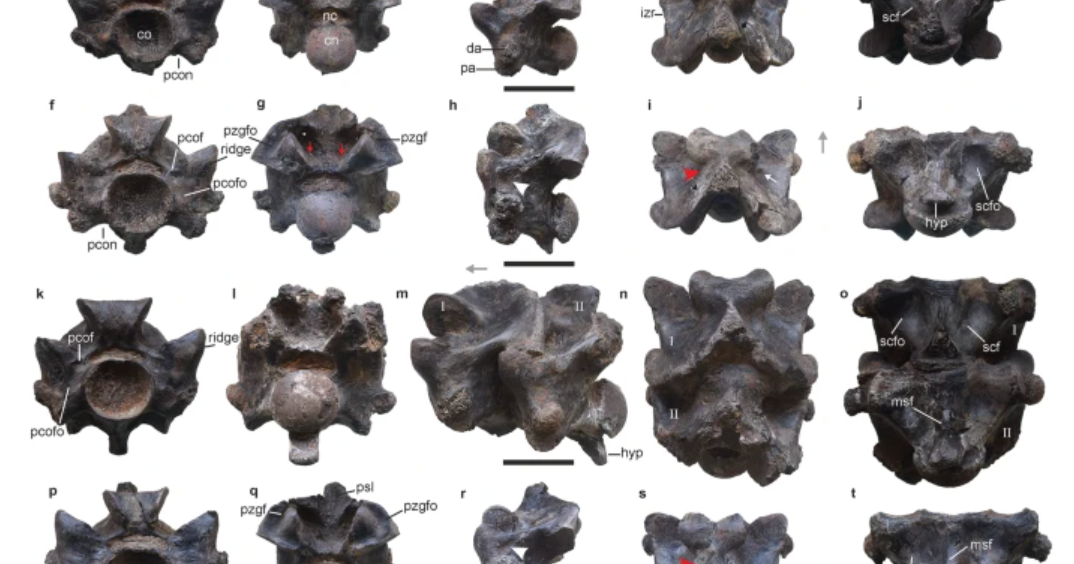Cash chaos after shock move targeting India's "black money"
NEW DELHI -- Almost two weeks after the Indian government banned the largest bills of the nation’s currency, people are still struggling to exchange their old cash and get their hands on the new bills.
More than 85 percent of India’s circulating currency was made instantly illegal on November 8, when Prime Minister Narendra Modi in a sudden and surprise televised address announced that 1,000 and 500 Rupee notes, worth about $15 and $7.50 respectively, would cease to be legal tender the next morning.
Since that moment, there have been long lines outside banks and at ATMs, and the government is struggling to help people facing the sudden cash crunch.
Thousands of people have spent up to six hours outside banks to get small amounts of new notes that the government is still in the process of printing. ATMs are still being re-calibrated to dispense new 2,000 Rupee notes. Some people line up before dawn with the hope of getting cash early when the bank opens in the morning.
Tempers are running high in the long lines, and scuffles have been reported in some parts of the country. Police and paramilitary forces have been deployed outside most banks and ATMs to prevent violence.
India’s Supreme Court on Friday warned the government “there could be riots” if urgent steps are not taken to give relief to people in “distress.”
Indians have until the end of this year to deposit their old cash in banks, but large deposits will bring penalties and could prompt tax investigations.
The Modi government’s move was aimed at bringing into account large amounts of unaccounted-for cash -- “black money” as it’s known -- that people are believed to have hidden in their homes to evade taxes. The government says such funds can end up funding terrorist activities.
A majority of Indians, however, who are not sitting on any “black money,” may be paying a big price for the sins of the few.
For the thousands of farmers, labourers, traders and drivers – the vast majority of whom are paid in cash in India -- the move has meant real hardship.
“I need 2,000 Rupees ($30) to buy medicine for my wife who has paralysis,” Delhi resident M. L. Grover, 75, told CBS News as he waited outside a bank.
He managed to persuade the others in the long line to let him jump ahead, but the ATM ran out of cash.
“I will now check if any other ATMs nearby have cash,” he said as he walked away.
India is primarily a cash economy; 78 percent of all transactions last year were made in cash, the highest among emerging global markets, according to a joint report by Google India and The Boston Consulting Group.
Britain-based PricewaterhouseCoopers says cash is used in a whopping 98 percent of consumer transactions in India.
Digital payments aren’t expected to surpass cash payments until 2023.
The majority of shop owners and customers in bigger markets across the country prefer to deal in cash. Many of them intend to go digital, but for now, there is a struggle for cash – and it’s creating a void in business.
“Banks told us card debit swipe machines won’t be available any time soon, so we are helpless,” Anil Kumar, a shopkeeper at Delhi’s Lajpat Nagar market told CBS News.
But the government is clearly keen to move that timetable forward, pushing hard for a cashless system, in spite of the huge gap remaining.
Smaller businesses like buses, auto-rickshaws, roadside food stalls and small shops that cater to people’s everyday needs are all cash-only, and they’ve been hit hardest.
“I have been waiting for a passenger for the past one hour,” laments auto-rickshaw driver Sanjay Podhar on a Delhi road. “But none came; they now prefer app-based cabs which accept digital money.”
He was waiting along with a bunch of other auto-rickshaw drivers, all of them keen to show the meagre amounts they’d earned. They say business is down 75 percent.
“Such radical decisions (Modi’s ban on big bills) are not the essence of this country,” Samar Shakil, the CEO of a mining company, told CBS News. “You cannot revive the economy with shock therapies.”
The government claims the Indian people have been supportive of the Prime Minister’s decision. In his speech, Modi talked about the troubles people would face but said people are “always ready to make the sacrifices and face difficulties for the benefit of the nation.”
“The hardships are temporary, but the benefits will be permanent,” teacher Rajeev Kumar, who agrees with the government stance, told CBS News. “We have to accept such tough decisions will come with a little bit of hardship.”
Puran Yadav, 35, who runs a roadside tea and snack stall in the capital, said his business was hit for the first week but he’s “happy that people who have stashed black money will have to pay a heavy penalty, or throw it into the Yamuna River.”
While many have welcomed the decision, describing it in military terms as a “surgical strike” on black money, they’ve criticised the manner in which the government implemented it.
And tea-seller Yadav’s sympathy with the government policy was hard to find elsewhere at street-level.
“Does it look like we have black money?” one of the auto-rickshaw drivers asked. “The real culprits with big bucks would have it in their Swiss bank accounts.”
Economists are divided on whether the decision will benefit or harm India, where only 1 percent of citizens pay income tax.
“The fight against corruption and black money in India has just begun. If successful, this will go down as the biggest reform in India,” wrote Surjit Bhalla, head of an economic research firm, in the Indian Express newspaper.
Many other economists believe the banks will get massive deposits, and could in turn lower interest rates and lend more for new businesses.
Others disagree.
“The very premise that demonetisation will help in removing the black money menace is wrong,” argues Abhirup Sarkar of the Indian Statistical Institute, who echoes the words of the rickshaw driver. “People don’t stack black money in cash. Rather, they stash it in undisclosed accounts in Swiss banks. So demonetisation won’t affect the big fish.”
Several opposition parties are demanding the decision be scrapped, but Modi’s government has made it clear there is “no question” of a rollback.
There have been limited efforts to help elderly people and others at the most risk under the new currency rules, and Modi has hinted that more such steps could be taken, but many agree he’s made the biggest economic and political gamble of his career.
